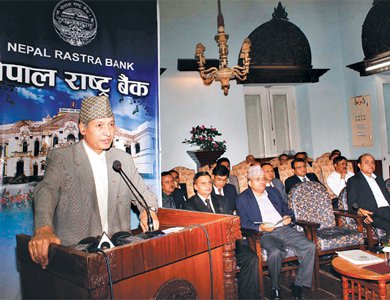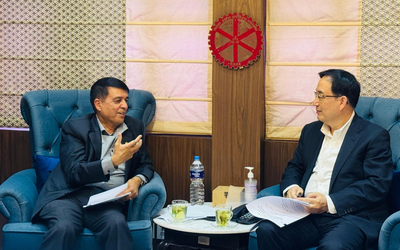
For the first time, the Monetary Policy has tried to reach a majority of people and the largest sector of the country. Encouraging Banking and Financial Institutions (BFIs) to go to rural areas and invest money in agriculture sector, Nepal Rastra Bank has made it clear that Nepal’s overall economic development is impossible without development of rural areas.
At a time when the rural sector is yet to get enough banking services, Nepal Rastra Bank’s new monetary policy came up with an aim to formulate the first ever Financial Sector Development Strategy to encourage the financial institutions to go in rural areas.
As banks and financial Institutions (BFIs) are unable to extend their services to the rural areas, NRB gives priority to open micro-finances in rural areas, encourage BFIs to open branches in rural areas, extend loan against the collateral of projects for farming coffee, tea, dairy and livestock.
One of the major highlights of the monetary policy is that it also envisages bringing down the spread rate - the difference between interest rate in loans and deposits -- to 5 percent in all BFIs. Despite slow progress in the merger, NRB continues the policy to encourage merger of BFIs.
NRB has also announced enforcing a guideline for acquisition among BFIs. Besides valuation of fixed and current assets of debtors, the monetary policy has also introduced a system to issue loan on the basis of cash flow and income of debtors.
The monetary policy has also provisions to reduce shares of institutional deposits to 60 percent of the total deposits mobilized by commercial banks. At a time when a large number of cooperatives are facing financial crisis and depositor are losing the money, NRB’s policy incorporated the provision to provide expert services to the Department of Cooperatives to support monitoring of saving and credit cooperatives with transactions of more than Rs 500 million.
“This is a flexible monetary policy aimed at achieving high economic growth by giving priority to agriculture, energy and industries for loan disbursement,” said Governor of NRB Dr Yuba Raj Khatiwada.“We give equal priority to increase access of the people of rural and remote areas to banking services, besides giving priority to increasing financial literacy among the people,” said Khatiwada.
As micro-finance institutions fail to extend their services in the rural parts of country due to lack of resources, the central bank will provide loans of up to Rs 2 million to micro finance Institutions (MFIs) at zero interest rate to open branches in districts with poor access to micro-finance service. Loan limit against collective collateral for good debtors under deprived sector credit has been increased to Rs 150,000 from Rs 100,000. NRB also increased the limit of micro-enterprises loan. They can now lend up to Rs 400,000 over the previous limit of Rs 300,000.
“NRB has reduced refinancing interest rates for BFIs from 6 percent to 5 percent allowing them to charge a maximum of 9 percent interest on loans issued for agriculture, hydropower, livestock, and fisheries as well as other designated productive sectors,” Khatiwada added.
The policy also expresses its determination to contain the inflation rate at 8 percent. Given the current state of economy, it seems to be highly ambitious plan.
“The policy has targeted to achieve higher growth, making the task of containing inflation at 8 percent a big challenge. It will be very difficult to bring investment in agriculture and energy to 12 percent of total lending of commercial banks at a time when we have been facing problem in issuing 10 percent of our total loans to these sectors,” said Uprendra Poudel, vice president of Nepal Bankers’ Association.
Others see this differently. “The monetary policy alone cannot bring drastic changes. Of course, this is a flexible policy, but my concern is on the part of implementation. The policy may land in a difficult situation in case of failure to handle it properly,” said Professor Dr. Bishombher Pyakuryal.
NRB has slashed the Capital Reserve Ratio (CRR) -- an amount that the bank and financial institutions mandatorily have to hold in cash -- by one percentage point to 5 percent for commercial banks, 4.5 percent for development banks and 4 percent for finance companies. NRB expects reduction on CRR to ease frequent liquidity problem in the banking system.
Monetary Policy tries to address all the problems faced by Nepal’s economic sector but everything will depend upon how the policy will be implemented.
- MELAMCHI WATER SUPPLY: No Interruption During Monsoon
- Jun 25, 2025
- KOREAN RETURNEES: Successful Integration
- Jun 25, 2025
- UPPER TRISHULI-1: Engaging With Local
- Jun 25, 2025
- IME GROUP: Twenty Five Years Of Journey
- Jun 24, 2025
- NEPAL’S AIR POLLUTION: A Growing Health Concern
- Jun 24, 2025















